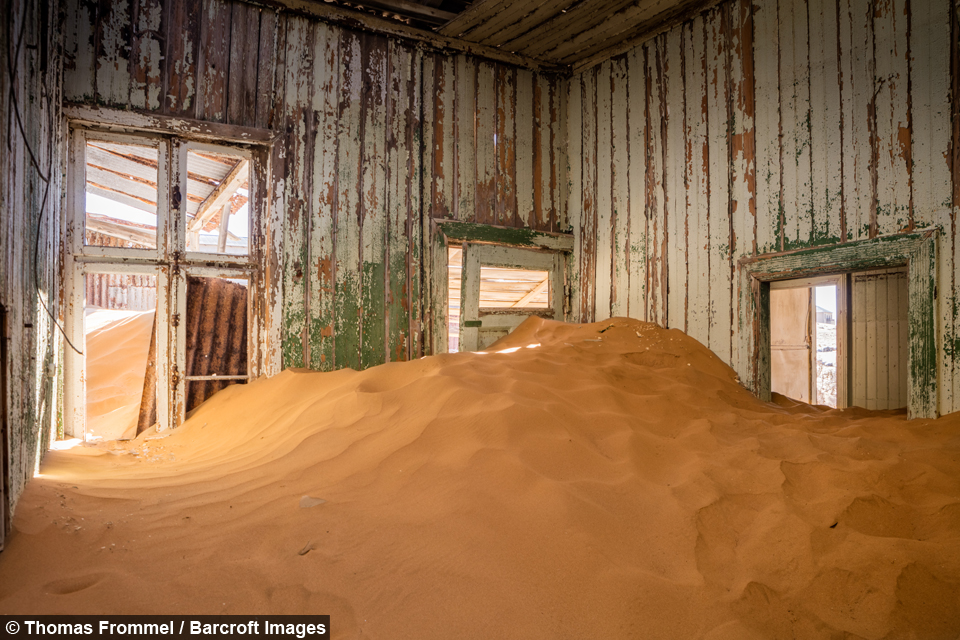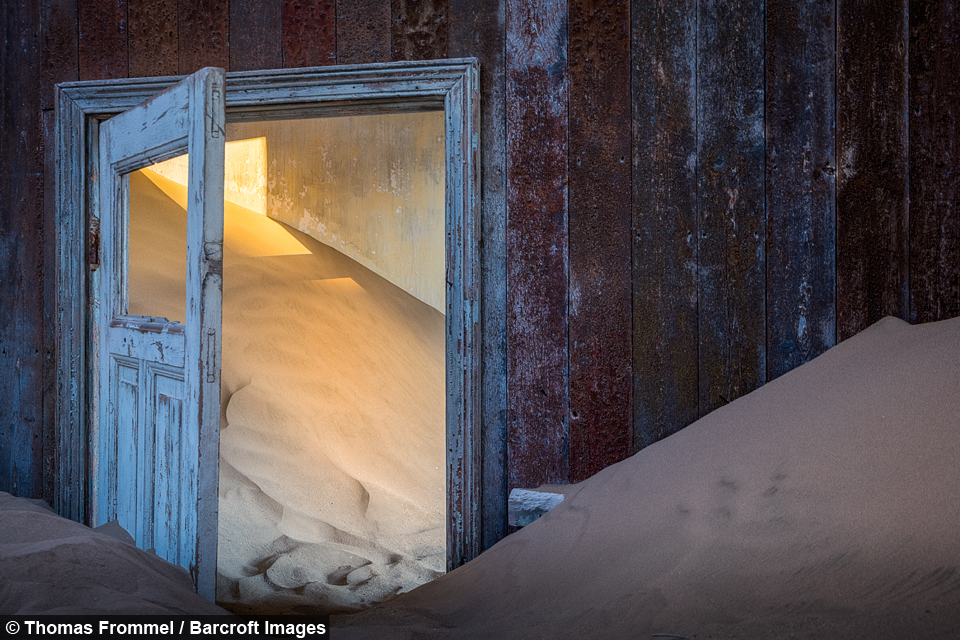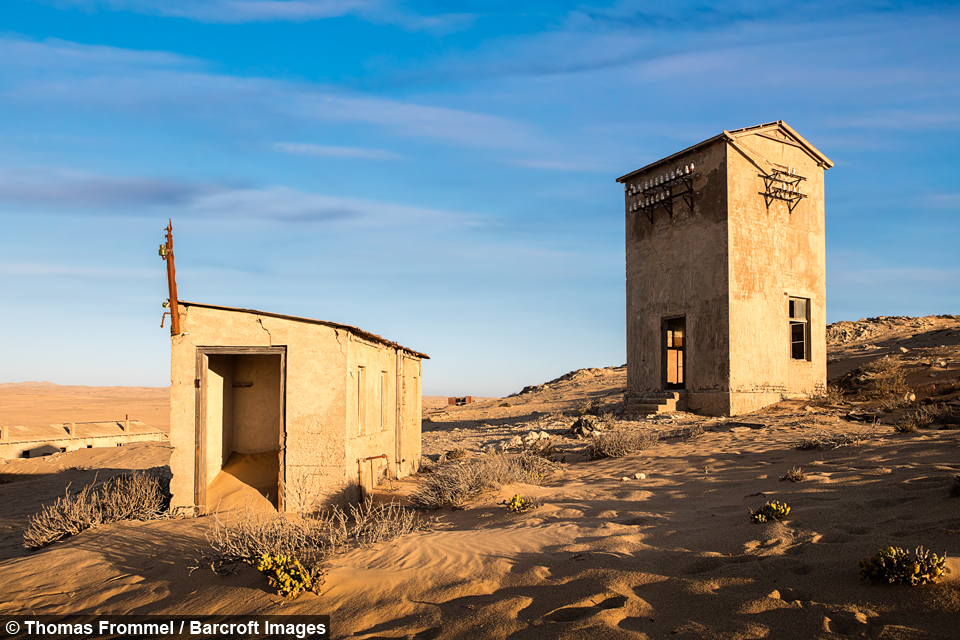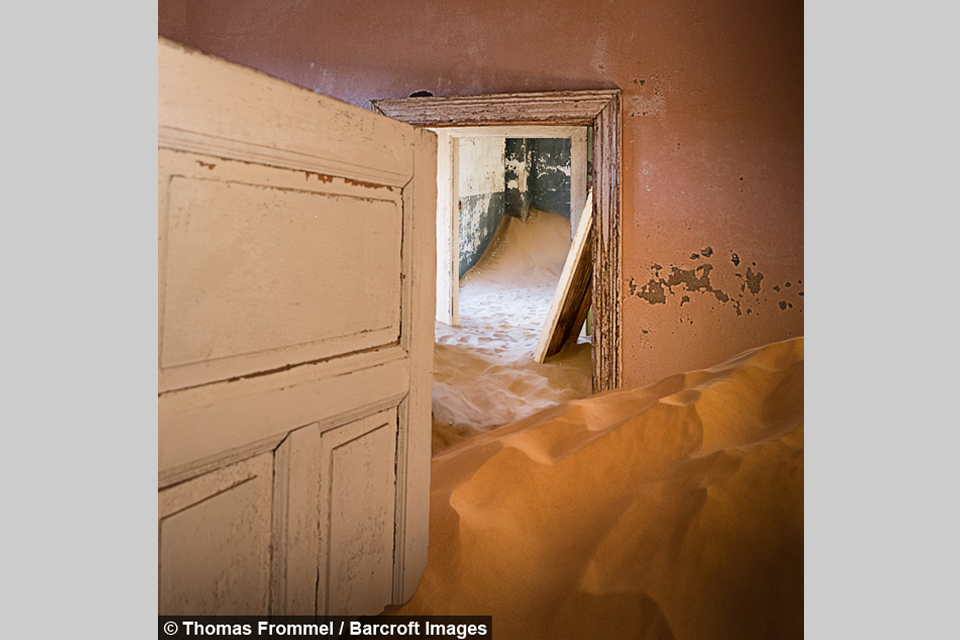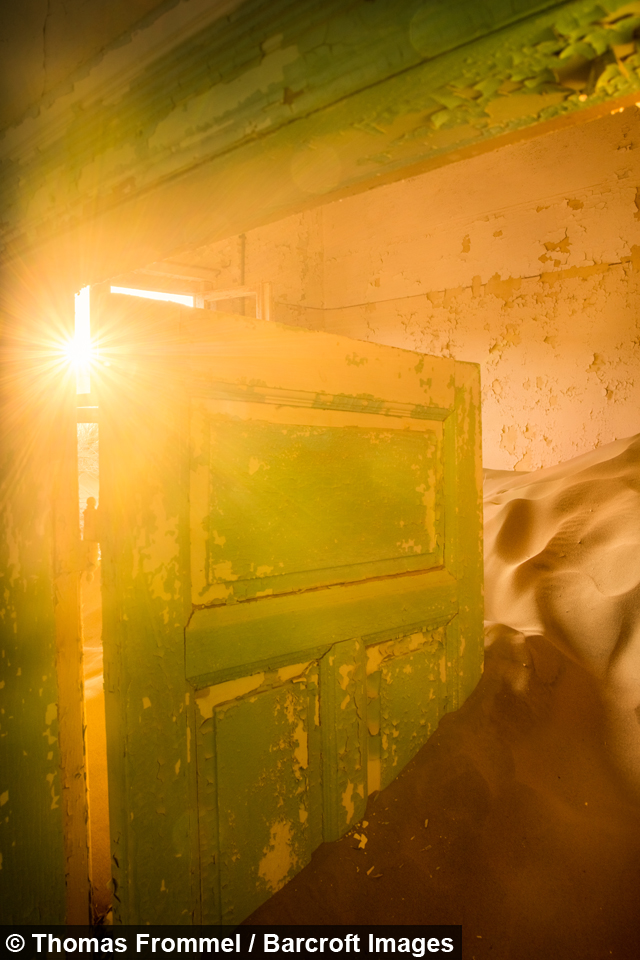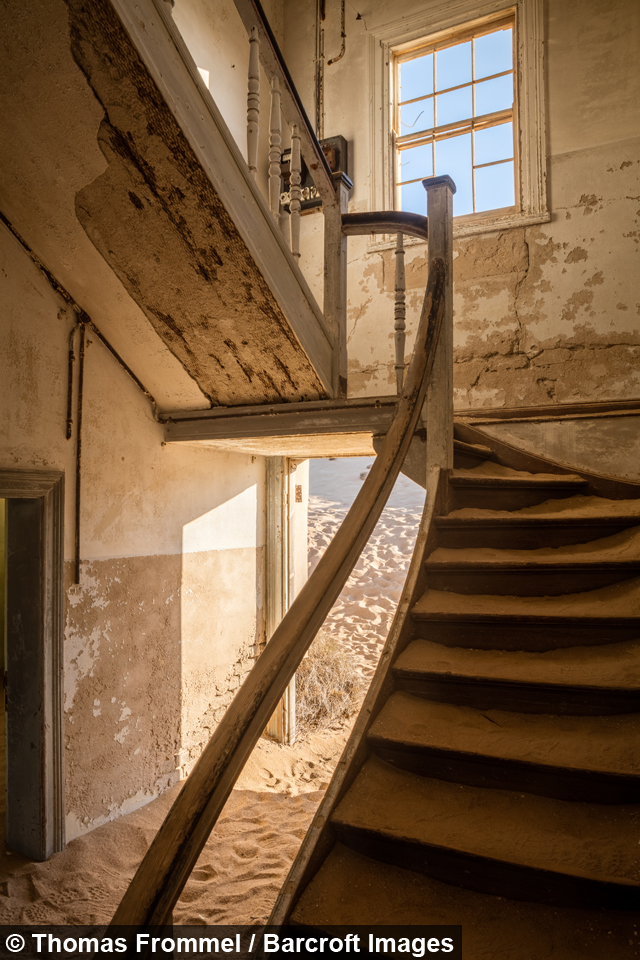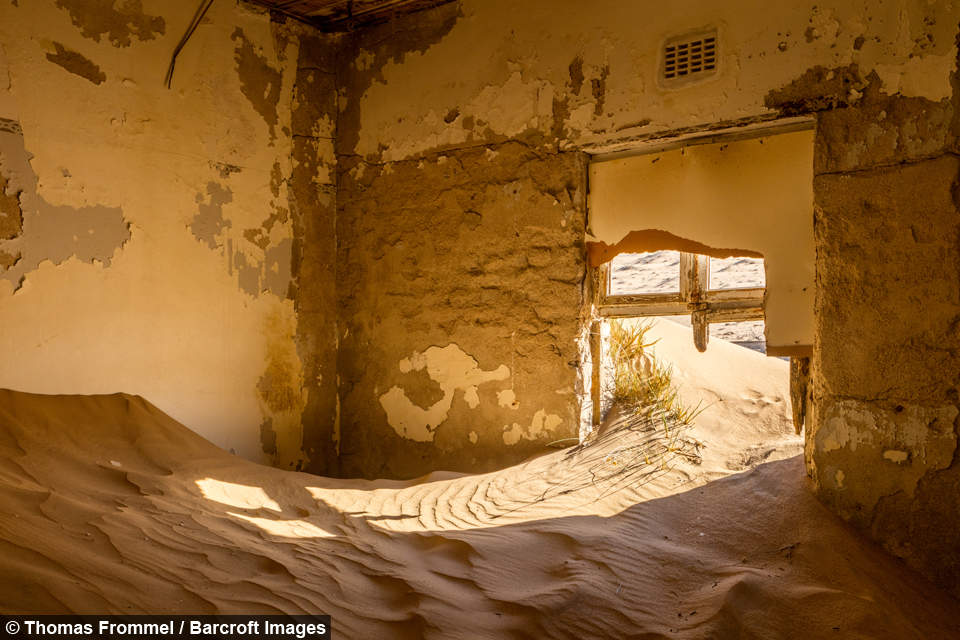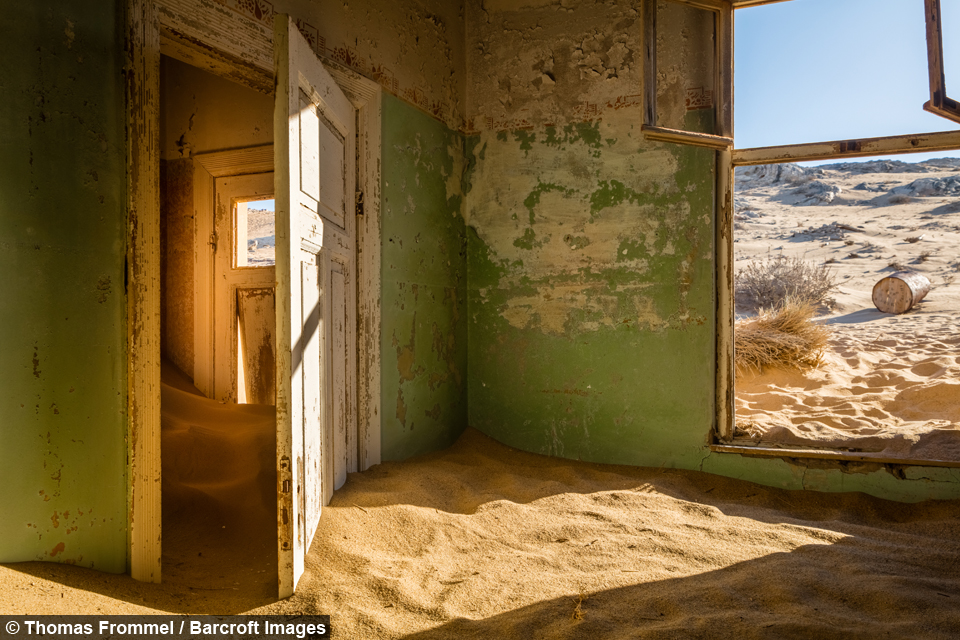Abandoned town disappears into Namib desert
By Katie Rawlins
Scroll down for the full story
Once a bustling diamond mining town, Kolmanskop was abandoned by German colonists in 1954 as the prospective diamond miners found richer pickings elsewhere.
German photographer Thomas Frömmel captured this ghostly settlement from the inside of the abandoned buildings on a trip to Namibia’s Namib Desert in April.
With some of the strongest winds on earth, the Namib Desert is reclaiming the town from its previous occupants.
Thomas explained: “There were many rooms where the sand went up to the ceiling.
“You often needed to crawl to get from one room to the other.”
Kolmanskop is battered by unrelenting sun and wind, and the town quickly fell into disrepair after its diamonds were exhausted and buildings abandoned.
The 39-year-old said: “It was dangerous to enter the ruins, especially the ones where the roof and ceiling had already collapsed.”
Still largely inaccessible to visitors, work is being done to reverse the damage of the rapid expansion the town experienced.
Frömmel said: “You could only hear the wind whispering and, from time to time, birds calling or a fly passing your ear.
“The air was full of energy and it was really inspiring.”
The town was born following the discovery of diamonds by a local railway worker which rapidly attracted a torrent of prospective diamond hunters.
At its peak in the 1920s it was home to around 1200 colonists and workers.
It also boasted a ballroom, theatre, school and hospital, which contained the first x-ray station in the southern hemisphere.
The Johannesburg-based photographer said: “I felt a bit touched and uneasy walking in rooms and houses that were someone else’s a couple of decades ago.
“Some rooms still had some furniture and personal belongings which intensified this feeling even more.”
Kolmanskop lies 10 kilometres from the port town of Lüderitz, in the Sperrgebiet area - subject to some of the highest wind speeds on earth.
Thomas added: “For me these pictures show that our single life is so unimportant compared to the power of nature, and our foot print should therefore be as small as possible.
“We shouldn’t have the right or power to put ourselves above nature as we are also a part of it."
